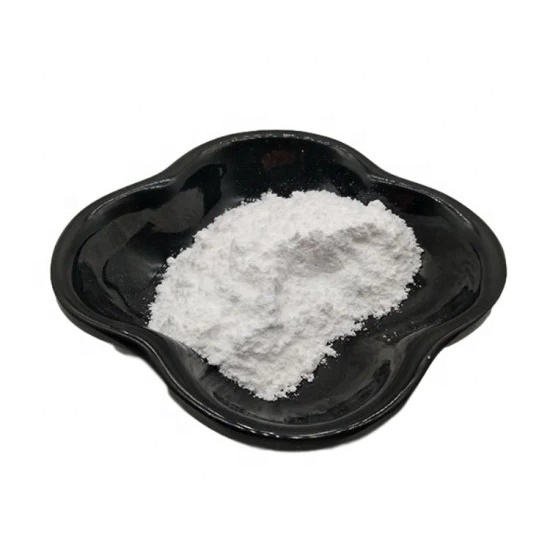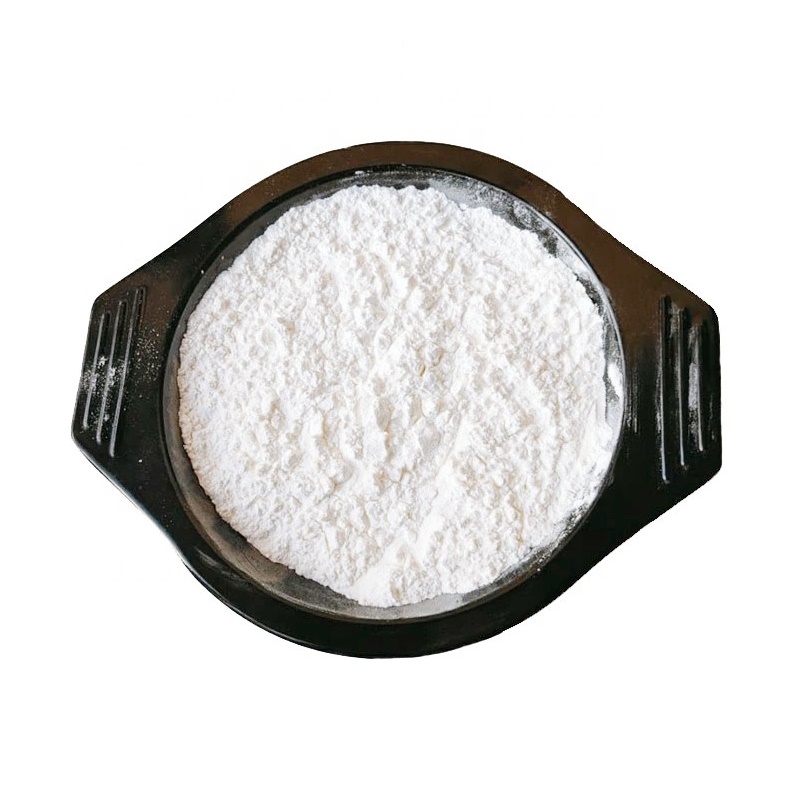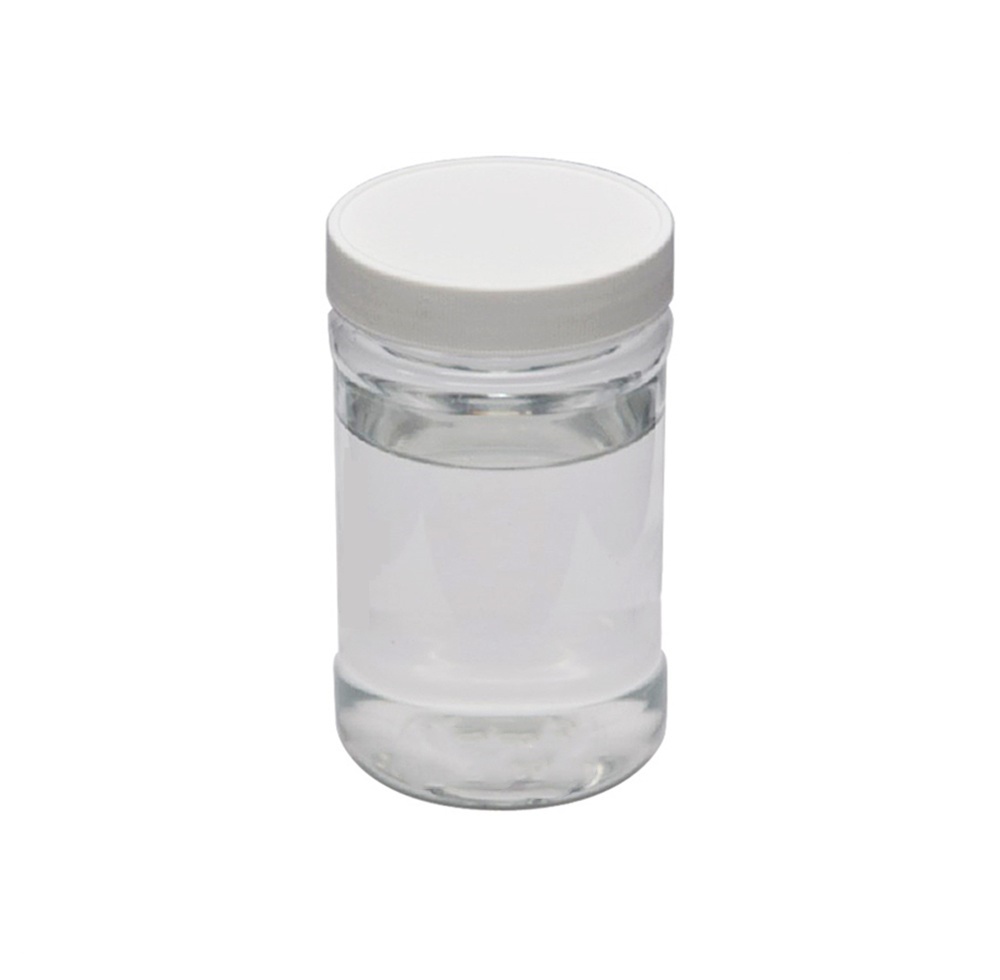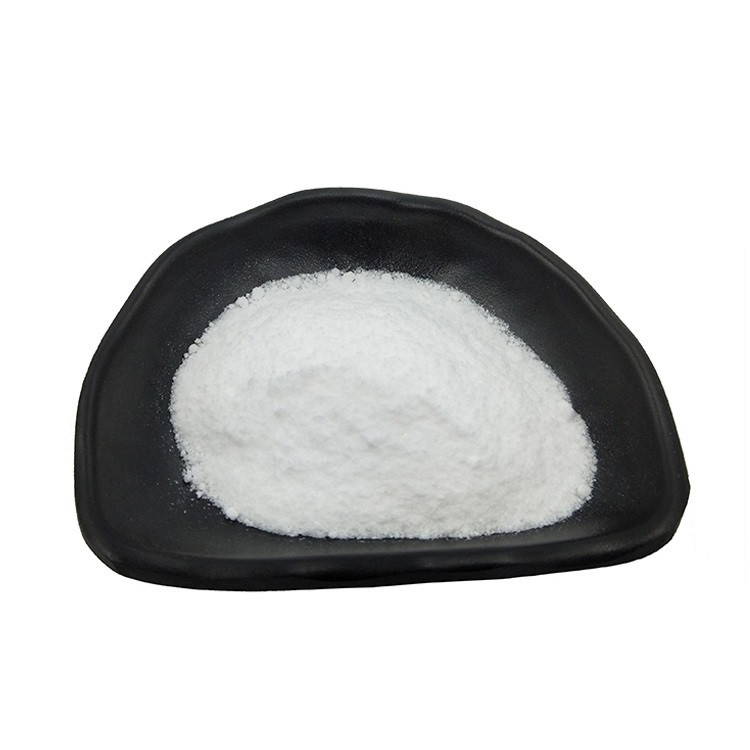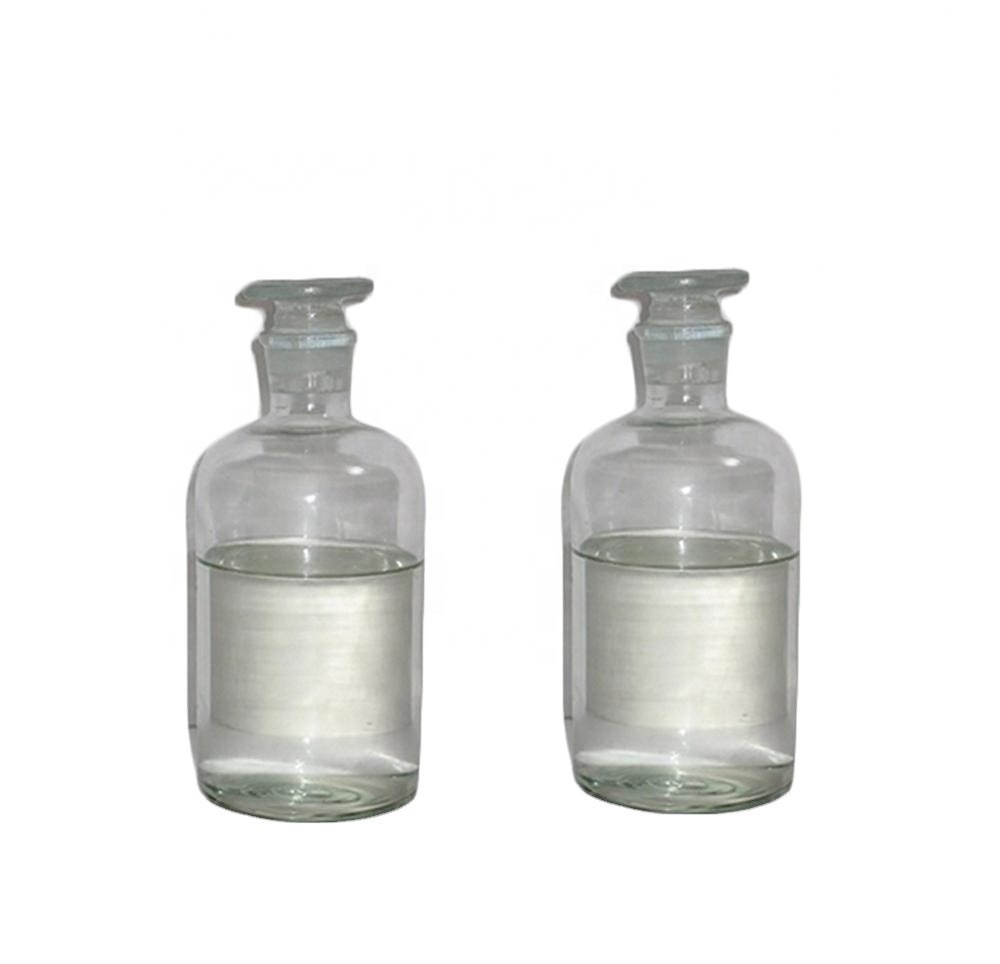

(2-CARBOXYETHYL) DIMETHYLSULFONIUM CHLORIDE CAS 4337-33-1
——————
CAS number : 4337-33-1
molecular formula : C5H11ClO2S
EINECS : 201-081-7
——————
Email : info@deshangchem.com
Mobile : +86-13153039501
TEL : +86-531-88752665
CAS number:4337-33-1
molecular formula:C5H11ClO2S
molecular weight:170.66
EINECS number:201-081-7
English synonyms
DMSP;DMPT;DIMETHYL-BETA-PROPIOTHETIN;DIMETHYLSULFONYLPROPIONATE;(2-CARBOXYETHYL)DIMETHYLSULFONIUMCHLORIDE;DChemicalbookimethylsulfoniopropionate;s,s-Dimethyl-β-propionicacidthetine;(2-CARBOXYETHYL)DIMETHYLSULFONIUMCHLORIDE98+%
Related categories
Food additives; Sulfur-containing compounds; Feed additives; Pharmaceutical raw materials; Aquatic food attractants; Food attractants, shelling agents, growth-promoting; Other sulfur-containing compounds; Organic chemical raw materials; Chemical products-organic chemical industry; Chemical intermediates; Food attractants Agents; agricultural and veterinary raw materials; organic chemical raw materials; spot; raw materials; chemical raw materials-1827181813; functional additives chemical raw materials; other raw materials; feed additives; chemicals; chemical raw materials; veterinary raw materials; fine chemical raw materials; Nutrition Chemicalbook enhancer IodoniumSulfonium&OxoniumCompounds;SulfoniumCompounds;finechemicals,specialtychemicals,intermediates,electronicchemical,organicsynthesis;Biochemical; Additives 1; Organic Intermediates
Introduction
(2-CARBOXYETHYL)DIMETHYLSULFONIUM CHLORIDE is an osmotic regulator of marine plants and is widely present in the active substances of marine organisms. Expert studies have shown that DMPT is effective in various marine and freshwater fish. It can also promote the molting of shrimps and improve the swimming ability of fish. DMPT is also the source of methyl group for animal nutrition replacement, which can improve aquaculture water. The meat quality of the product makes the freshwater aquatic products present the seafood flavor, thereby improving the economic value of the freshwater aquatic products.
Chemical properties
| Melting point | 129°C |
| Storage conditions | Inertatmosphere,2-8°C |
| Solubility | DMSO(Slightly),Methanol(Slightly),WatChemicalbooker(Slightly) |
| Shape | Solid |
| Color | WhitetoOff-White |
| InChIKey | RRUMKKGRKSSZKY-UHFFFAOYSA-N |
| CAS database | 4337-33-1(CAS DataBase Reference) |
Use
● DMPT is the fourth-generation aquatic attractant with the best effect found so far. Some people use "fish bite stone" to describe its attracting effect - even if this kind of thing is painted on the stone, the fish will bite. Stone. The most typical use of DMPTChemicalbook is to use it as a bait for fishing to improve the attractability of the bait and make it easy for fish to bite. The industrial application of DMPT is as a green aquatic feed additive to promote the feeding of aquatic animals and increase their growth rate.
● Used as a food attractant for aquafeed
Production method
Natural extraction method
The earliest thiating dimethyl-β-propionate is a pure natural compound extracted from seaweed. In fact, the process of discovering thiating dimethyl-β-propionate also started from seaweed: scientists observed that marine fish I love to eat seaweed, so I started to study the attracting factors in seaweed, and later found that the reason why fish love to eat seaweed is that seaweed contains natural DMPT.
Chemical synthesis method
Due to the high cost and low purity of the natural extraction method to produce thietine dimethyl-β-propionate, it is inconvenient for industrialization. Scientists have developed a method for artificial synthesis of thietine dimethyl-β-propionate based on the structure of natural DMPT. This enables the large-scale application of thiating dimethyl-β-propionate.
Synthetic method 1: dimethyl sulfide and 3-bromopropionic acid are reacted in a solvent to obtain dimethyl-β-propionic acid thitin hydrobromide. Due to the high price of 3-bromopropionic acid, this The cost of thiating dimethyl-β-propionate synthesized by the Chemicalbook method is too high to be acceptable to consumers.
Synthetic method 2: dimethyl sulfide reacts with 3-chloropropionic acid in a solvent to obtain dimethyl-β-propionic acid thiating hydrochloride. Due to the relatively low reactivity of 3-chloropropionic acid, although its purchase price It is lower than 3-bromopropionic acid, but the yield of the reaction is also low, and the cost of synthesis is still very high.
Synthesis method 3: After three years of hard research, the chemical experts of Beijing Green Fucheng Technology Co., Ltd. finally developed a new synthetic route in 2005, which greatly reduced the production cost of thietine dimethyl-β-propionate ( The sales price is only one third of the traditional method), and obtained the national invention patent in 2007 (patent authorization number ZL200510108680.X, patent name "dialkyl-β-propionate thiidine hydrohalide and carboxylate method of preparation").
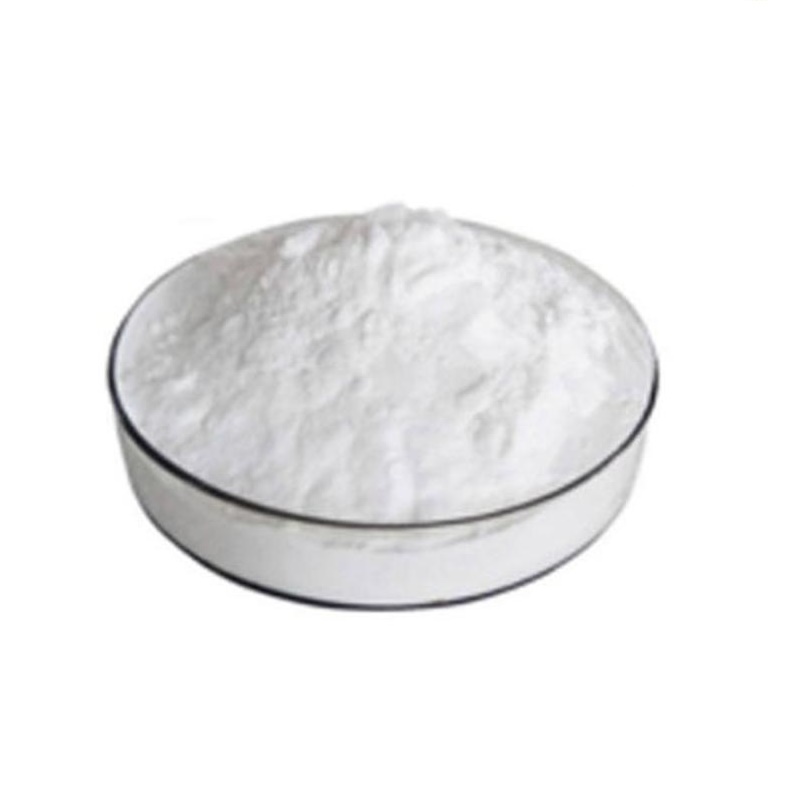
(2-CARBOXYETHYL) DIMETHYLSULFONIUM CHLORIDE CAS 4337-33-1
CAS number:4337-33-1
molecular formula:C5H11ClO2S
molecular weight:170.66
EINECS number:201-081-7
English synonyms
DMSP;DMPT;DIMETHYL-BETA-PROPIOTHETIN;DIMETHYLSULFONYLPROPIONATE;(2-CARBOXYETHYL)DIMETHYLSULFONIUMCHLORIDE;DChemicalbookimethylsulfoniopropionate;s,s-Dimethyl-β-propionicacidthetine;(2-CARBOXYETHYL)DIMETHYLSULFONIUMCHLORIDE98+%
Related categories
Food additives; Sulfur-containing compounds; Feed additives; Pharmaceutical raw materials; Aquatic food attractants; Food attractants, shelling agents, growth-promoting; Other sulfur-containing compounds; Organic chemical raw materials; Chemical products-organic chemical industry; Chemical intermediates; Food attractants Agents; agricultural and veterinary raw materials; organic chemical raw materials; spot; raw materials; chemical raw materials-1827181813; functional additives chemical raw materials; other raw materials; feed additives; chemicals; chemical raw materials; veterinary raw materials; fine chemical raw materials; Nutrition Chemicalbook enhancer IodoniumSulfonium&OxoniumCompounds;SulfoniumCompounds;finechemicals,specialtychemicals,intermediates,electronicchemical,organicsynthesis;Biochemical; Additives 1; Organic Intermediates
Introduction
(2-CARBOXYETHYL)DIMETHYLSULFONIUM CHLORIDE is an osmotic regulator of marine plants and is widely present in the active substances of marine organisms. Expert studies have shown that DMPT is effective in various marine and freshwater fish. It can also promote the molting of shrimps and improve the swimming ability of fish. DMPT is also the source of methyl group for animal nutrition replacement, which can improve aquaculture water. The meat quality of the product makes the freshwater aquatic products present the seafood flavor, thereby improving the economic value of the freshwater aquatic products.
Chemical properties
| Melting point | 129°C |
| Storage conditions | Inertatmosphere,2-8°C |
| Solubility | DMSO(Slightly),Methanol(Slightly),WatChemicalbooker(Slightly) |
| Shape | Solid |
| Color | WhitetoOff-White |
| InChIKey | RRUMKKGRKSSZKY-UHFFFAOYSA-N |
| CAS database | 4337-33-1(CAS DataBase Reference) |
Use
● DMPT is the fourth-generation aquatic attractant with the best effect found so far. Some people use "fish bite stone" to describe its attracting effect - even if this kind of thing is painted on the stone, the fish will bite. Stone. The most typical use of DMPTChemicalbook is to use it as a bait for fishing to improve the attractability of the bait and make it easy for fish to bite. The industrial application of DMPT is as a green aquatic feed additive to promote the feeding of aquatic animals and increase their growth rate.
● Used as a food attractant for aquafeed
Production method
Natural extraction method
The earliest thiating dimethyl-β-propionate is a pure natural compound extracted from seaweed. In fact, the process of discovering thiating dimethyl-β-propionate also started from seaweed: scientists observed that marine fish I love to eat seaweed, so I started to study the attracting factors in seaweed, and later found that the reason why fish love to eat seaweed is that seaweed contains natural DMPT.
Chemical synthesis method
Due to the high cost and low purity of the natural extraction method to produce thietine dimethyl-β-propionate, it is inconvenient for industrialization. Scientists have developed a method for artificial synthesis of thietine dimethyl-β-propionate based on the structure of natural DMPT. This enables the large-scale application of thiating dimethyl-β-propionate.
Synthetic method 1: dimethyl sulfide and 3-bromopropionic acid are reacted in a solvent to obtain dimethyl-β-propionic acid thitin hydrobromide. Due to the high price of 3-bromopropionic acid, this The cost of thiating dimethyl-β-propionate synthesized by the Chemicalbook method is too high to be acceptable to consumers.
Synthetic method 2: dimethyl sulfide reacts with 3-chloropropionic acid in a solvent to obtain dimethyl-β-propionic acid thiating hydrochloride. Due to the relatively low reactivity of 3-chloropropionic acid, although its purchase price It is lower than 3-bromopropionic acid, but the yield of the reaction is also low, and the cost of synthesis is still very high.
Synthesis method 3: After three years of hard research, the chemical experts of Beijing Green Fucheng Technology Co., Ltd. finally developed a new synthetic route in 2005, which greatly reduced the production cost of thietine dimethyl-β-propionate ( The sales price is only one third of the traditional method), and obtained the national invention patent in 2007 (patent authorization number ZL200510108680.X, patent name "dialkyl-β-propionate thiidine hydrohalide and carboxylate method of preparation").
Team Presentation

